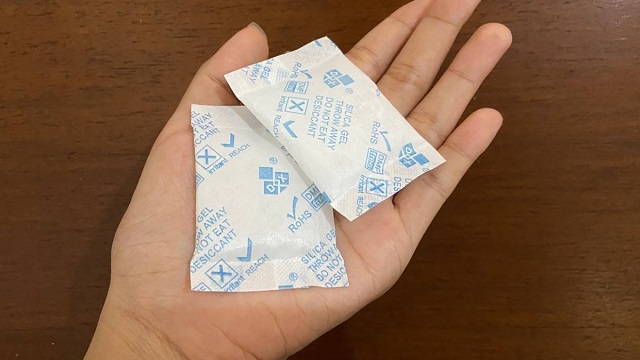
It's a nasty sight—unused shoes covered in mold. It's not just the unending quarantine, it's the damp weather, too. While the "ber" months are a welcome respite from the oven-hot summer, it's also peak season for those fuzzy dots to sprout all around the house. Yup, we're here to remind you to check in on all the stuff you bought pre-quarantine thinking you'd get to use them in the outside world!
Also read: The Internet Is Raving About This Handy Cleaning Paste and You Can Get It on Shopee
Use this rainy-season guide to preventing mold in your home:
How can you tell if your home has mold?
If you've had to wipe away white dots on your furniture after a typhoon, that's mold. It's a type of fungus that thrives in moist environments and causes musty odor. Aside from the smell, spores pose a health risk which can irritate sinuses when inhaled or cause skin infections.
Mold takes on various appearances depending on the surface or item. Leather goods, floors, and furniture are often home to white mold. Clothes stuck in the closet for too long are often splotched with brown dots when you take them out. Shower curtains get black mold, and bathroom or kitchen tiles are susceptible to the orange kind.
The fungus will always be around, but it's best to keep it at low levels to prevent harm to your health and damage to your things.
What causes mold?
The Philippines is a high-humidity country, meaning the air holds more water due to evaporation. It's what makes the hot weather feel even hotter. Higher humidity and too much water are the best conditions for mold.
Mold can grow on anything that holds moisture, especially dark, damp environments like the corners of bathrooms and kitchens, and areas with no windows like basements or attics.
Areas with poor ventilation are also targets for mold. This can be the old bedroom, a storage room, or cabinets that house supplies taken out only once or twice a year.
How do you prevent mold from forming?
Check your stuff
With pandemic restrictions keeping most of us home, a lot of stuff are kept in drawers and cabinets just awaiting the day they can be once again used for an OOTD post. You might think the lack of wear prevents items from getting old, but they are especially susceptible to mold.
Whip open your cabinets and inspect your things. If you see brown spots, give them a good wash and dry. If possible, dry them out under the sun to ensure all mold is killed and moisture is gone.
For leather goods and shoes, dust them and clean them as best as you can before airing them out. Before you return your items to their proper places, clean out the storage too.
Remove mold right away
Wiping surfaces with equal parts soap and water can clean the mold. If you spot it, wipe it off right away before more mold comes along. Cleaning your house after a storm will also prevent mold from forming.
Fix the moisture problem
If there's a broken pipe or unusual source of water, getting it fixed as soon as possible will prevent mold from growing with the moisture.
Open your windows
Allowing the air in your home to circulate freely. You can do this by opening doors and windows. If you have exhaust fans, you can turn them on. If you can, have all vents release the air outside your home.
Desiccants are your friend
Remember those white packets of Silica Gel that say "DO NOT EAT" when you buy a pair of shoes or a bag? Those are actually desiccants that absorb moisture before it can get to the item, thus preventing mold from forming and preserving the product.

Bigger packets can be bought online, which you can stuff into your shoes or bags. For cabinets, tubs of desiccants are also available. There are also hanging types you can wedge in between hangers of clothes.
If all else fails, dehumidify
Here's to hoping your mold problem isn't too much but just in case you've tried everything and you still get white spots at home, a dehumidifier can help.
Dehumidifiers come in rechargeable or plugged types, depending on what you need. Rechargeable types require the water to be evaporated from the desiccant before reuse and you can usually tell it's time to recharge when the white or orange beads have turned black.
Plugged types can keep running as long as they're connected to electricity and will siphon all that moisture into a built-in container, which you can throw out once full and return once emptied.
Hey, Spotters! Check us out on Viber to join our Community and subscribe to our Chatbot.
Source: Spot PH
No comments:
Post a Comment